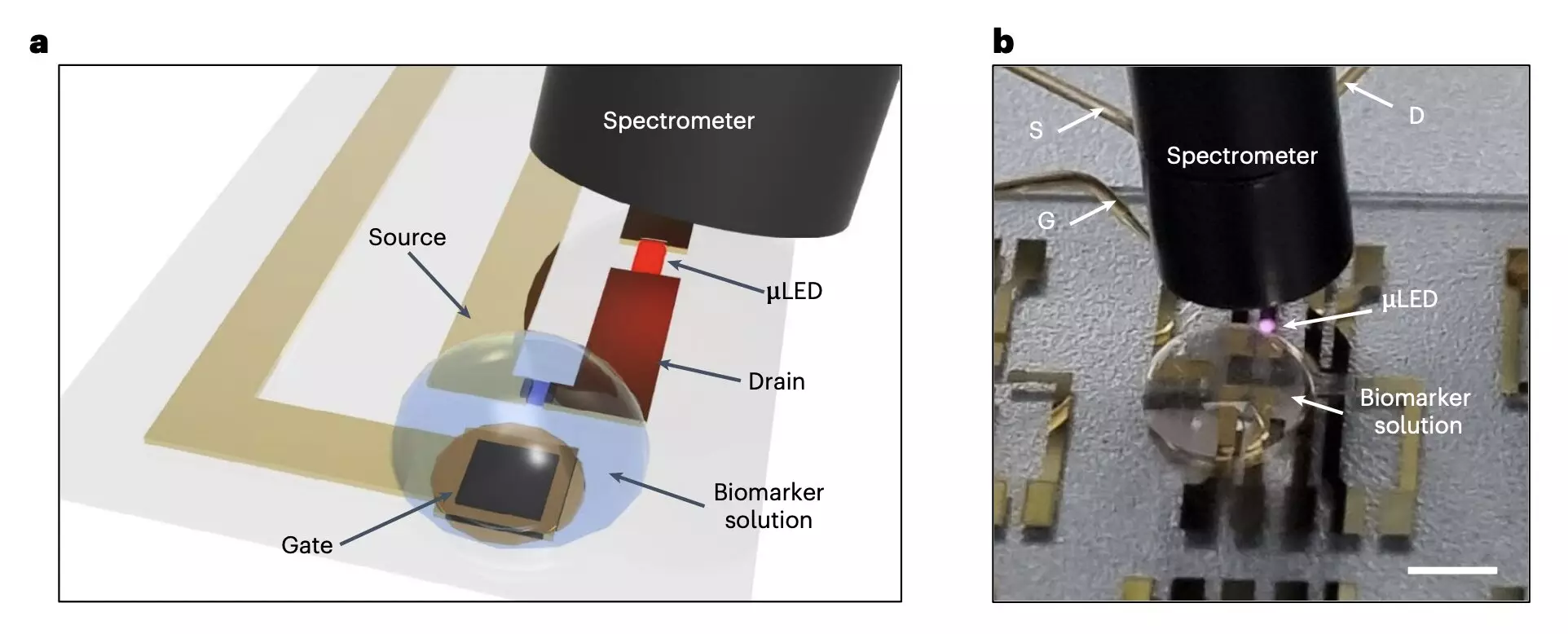

In an era where health consciousness is on the rise, the integration of technology into personal health monitoring systems is more relevant than ever. Wearable devices have increasingly become the tool of choice for individuals seeking to quantify their physiological states, providing real-time data on metrics such as heart rate, caloric expenditure, and sleep quality. These devices are not only vital for sports enthusiasts but also hold immense potential in healthcare applications, particularly for chronic condition management. The advancement of electronics engineering is paving the way for innovative solutions that are not just comprehensive but also convenient.
Central to the development of these new-generation wearables are organic electrochemical transistors (OECTs). Characterized by their flexibility and ability to amplify faint biological signals, OECTs are emerging as groundbreaking components in health monitoring technology. The significant advantage of OECTs lies in their capacity to monitor a wide range of biological markers—including glucose, lactate, and even neurotransmitters—from perspiration and other biofluids. This capability expands the horizons of diagnostics, allowing for noninvasive methods for real-time health assessments.
Despite the promise that OECTs bring, there have been significant challenges regarding the wireless transmission of the data they gather. Traditional communication circuits, predominantly constructed from rigid, inorganic materials, tend to thwart the flexibility and compactness desired in wearable technologies. However, a recent breakthrough from authorities at the Korea Institute of Science and Technology (KIST) has introduced an exceptional device that integrates both organic and inorganic components. This hybrid approach not only establishes a more efficient signal relay system but does so without sacrificing the mechanical flexibility that users need.
In their recent publication in *Nature Electronics*, researchers Kyung Yeun Kim, Joohyuk Kang, and their team presented an ultrathin integrated device capable of monitoring key biomarkers such as glucose, pH levels, and lactate concentrations. With an impressively slim profile of merely 4 micrometers, this innovative system is designed on a parylene substrate. It utilizes a combination of OECT sensors integrated with micro-light-emitting diodes (μLEDs) fashioned from inorganic materials. The synergy of these technologies not only enhances performance but also promises remarkable mechanical stability—a critical factor for wearables that need to endure daily wear and tear.
The intricate workings of the newly designed system hinge on the dynamic relationship between the OECTs and the μLEDs. The sensors detect specific biomarkers through electrical signals that vary according to the concentrations present in their environment. These fluctuations in channel current affect the light emitted from the μLEDs, enabling continuous biomarker monitoring without the need for bulky equipment. Moreover, the integration of an elastomeric battery circuit transforms the device into a practical wearable patch, showing remarkable promise for broader consumer use.
Initial trials of the device have yielded exceptionally promising results, boasting high transconductance and excellent mechanical reliability. Not only has the system demonstrated the ability to accurately monitor critical biomarkers, but it has also shown potential in near-infrared imaging applications. Such versatility indicates that the device might undergo further refinement to enhance its capabilities, potentially paving the way for novel diagnostic technologies. Additionally, the prospect of integrating soft power sources like solar cells could foster the development of a completely chipless and sustainably powered health-monitoring platform.
While the advancements in this field are undoubtedly promising, the path forward is not without hurdles. The continued integration of organic and inorganic materials will require rigorous testing to ensure lasting reliability and safety. Furthermore, as with all wearable technologies, user acceptance and comfort remain critical factors to address. If these challenges can be met, the future of health monitoring may well be transformed, offering unprecedented levels of convenience and insight into personal health management.
The fusion of science and technology in wearable devices heralds a new era in health monitoring. With ongoing innovations, the potential for these compact, efficient systems could redefine how individuals interact with their health data, ultimately leading to better preventive care and management of medical conditions.
A groundbreaking discovery by scientists at the University of Manchester is poised to reshape the…
In an era marked by rapid ecological change, the quest for understanding environmental pollutants like…
The meteoric rise of artificial intelligence (AI) technologies is not without significant implications on our…
The landscape of quantum computing is on the verge of transformative progress, fueled by groundbreaking…
Schizophrenia is not merely a mental health issue; it is a multifaceted condition that wreaks…
Recent scientific research has illuminated the intricate web that ties our dietary choices to the…
This website uses cookies.